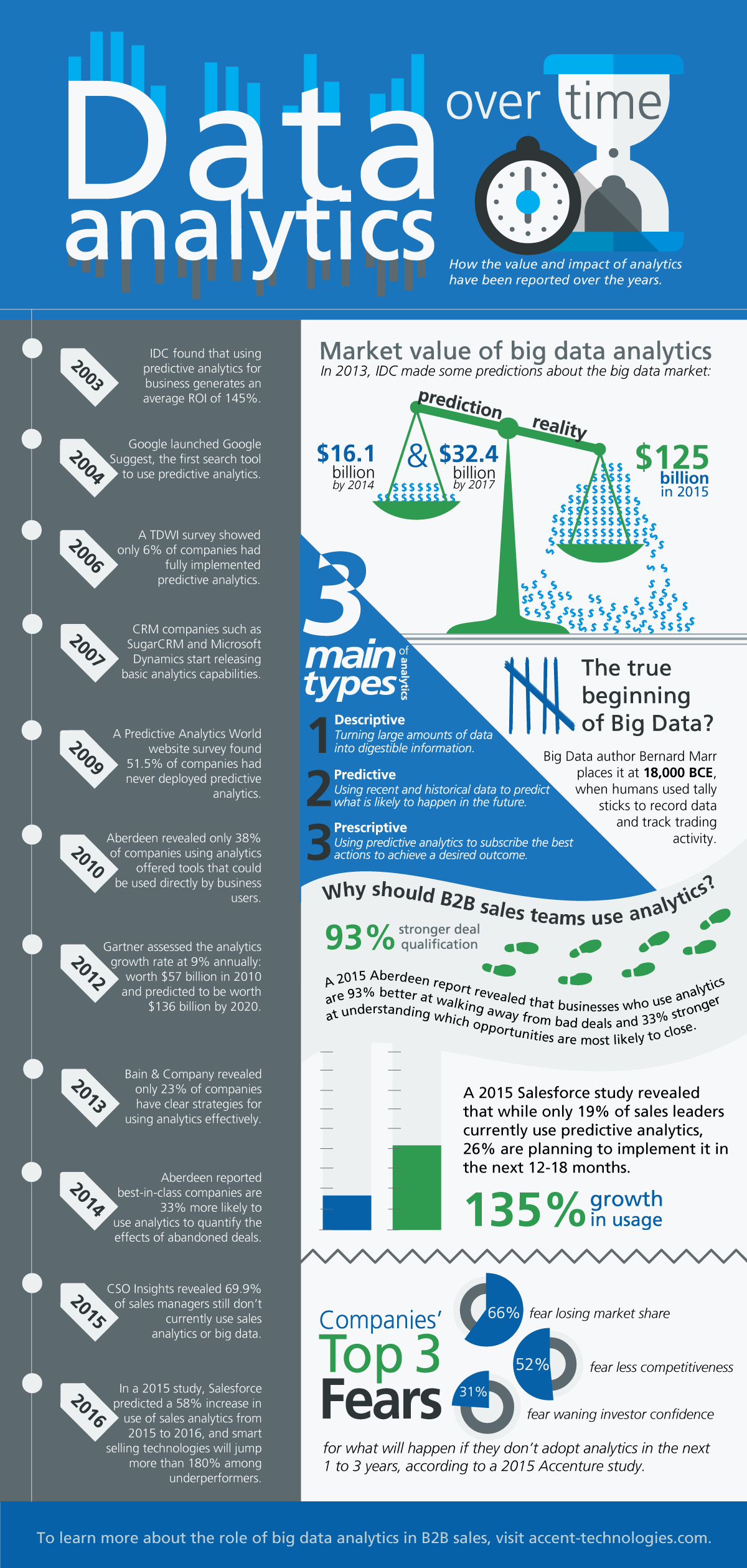sales
Here’s How Business Analytics Has Evolved Over Time [Trend Analysis]
We’re going to debunk a common idea today. Are you ready?
Here we go: Analytics is not new.
Take a moment to read this opening introduction from an article titled Shaping the Future: Predictive Analytics Deliver the Promise of CRM:
“Customer relationship management promises to improve business effectiveness, profitability, market share, growth, and attainment of other business goals. While many CRM projects have created more efficient processes for customer collaboration, the ultimate goal of lowering costs, increasing revenue, and profitability is yet to be fully realized.”
It’s a fairly average opening to an article about improving CRM using predictive analytics, right? Plot twist: It was written in 2002.
More than a decade since people have started talking about the efficacy of big data analytics within the sales process, businesses are still dragging their feet about adopting the technology. According to Salesforce’s 2015 State of Sales publication, only 19% of sales leaders currently use predictive analytics.
That statistic is going to be a lot more staggering after you look at the research in the infographic posted below. We took a look at how analytics have been studied and reported over the last decade or so, making note of analytics trends over time.
Here are a few of the highlights from the research:
- The ROI on analytics was established very early on, and subsequent studies over the years confirmed that the high value of analytics was not exaggerated.
- While predictions about analytics started out broad, over time they honed in on specific applications such as lead scoring analytics or self-service analytics models.
- The early predictions about analytics market value were blown away by the actual value revealed in later years.
It’s clear that analytics has been around for quite some time, but it’s only just now receiving widespread adoption. By analyzing trends such as this, businesses can see what technologies are worth investing in and which are doomed to failure. After all, “live in the now” might be good advice for experiencing a stress-free lifestyle, but it’s not such good advice for business planning.
All of this research on analytics shows that the technology is established and effective, but here’s the next question: is there still room for innovation? Speaking as solution providers who find new ways to utilize analytics within our products on a regular basis, we’re going to answer with a definitive yes!
The field of analytics has so much to offer businesses, and we look forward to seeing what the future holds for this versatile technology.












